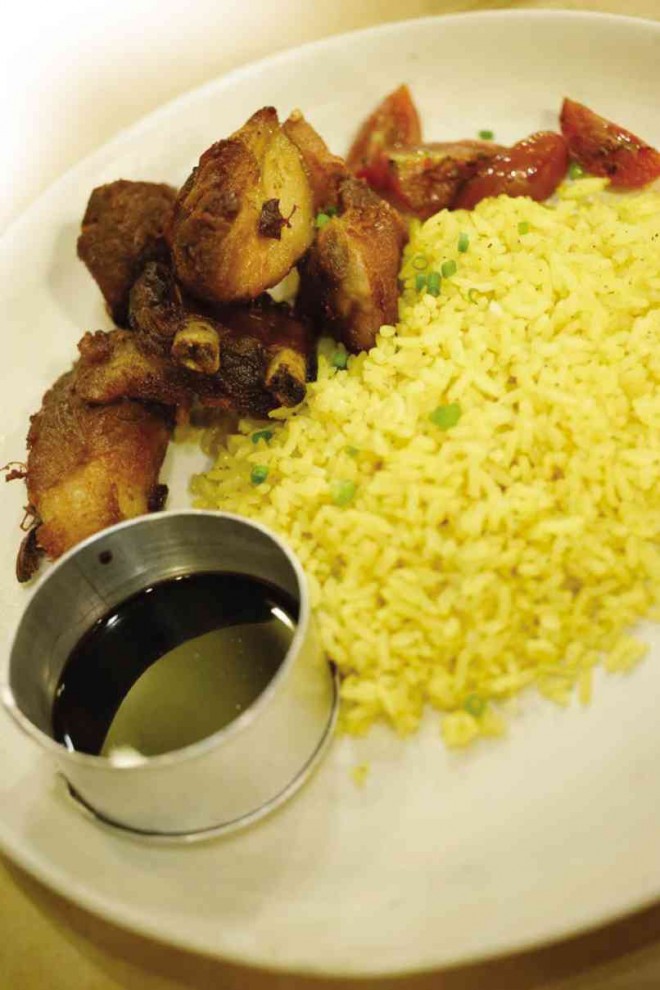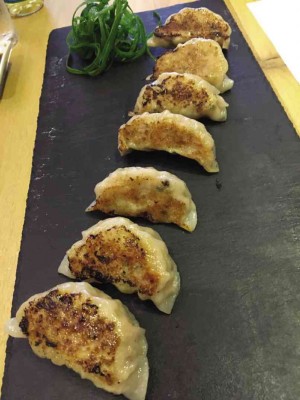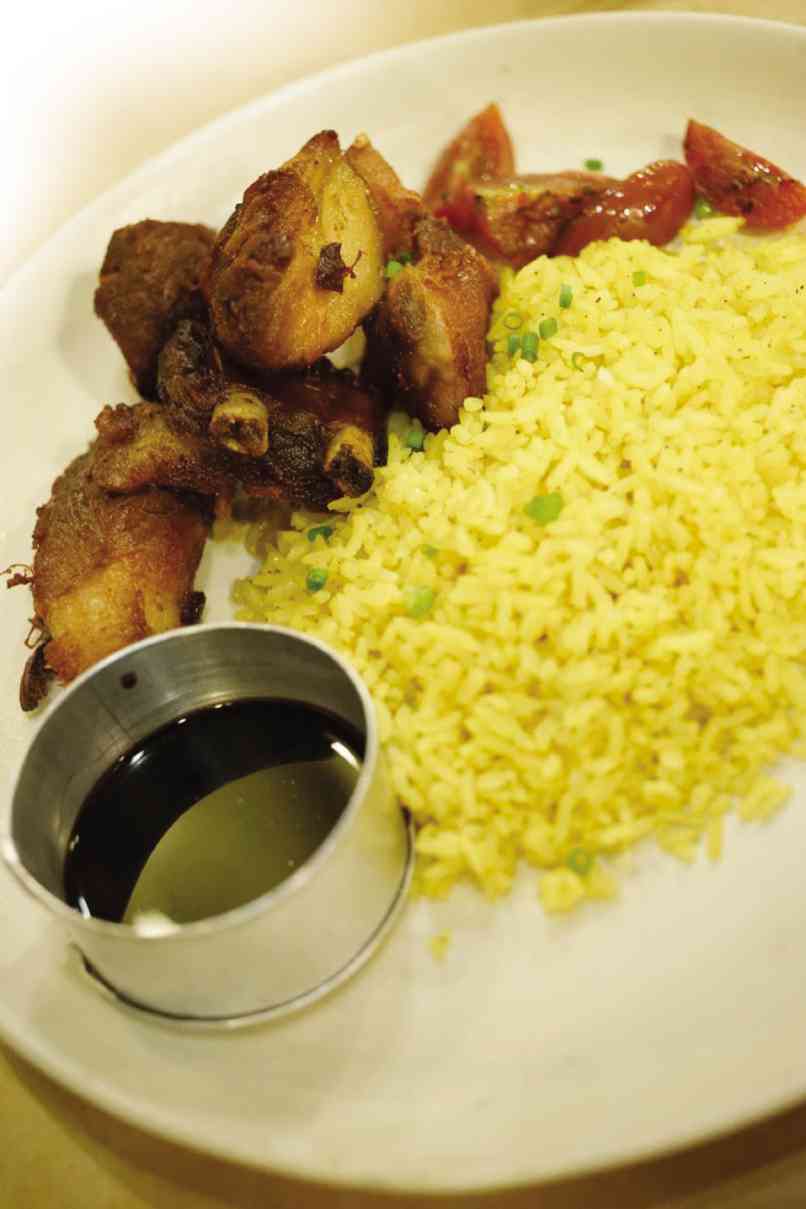
By the time you read this, it will be too late. Well, almost. You’ll have only one more day to catch the Batanes festival at Grace Park, Margarita Forés’ restaurant at One Rockwell, where ingredients lovingly hand-carried by the event’s co-organizer, Patsy Abad, are being whipped up into Ivatan dishes, on top of the regular menu.
For those like me who have always wanted to go to Batanes but never got the chance to, it’s the closest we might get to the island’s unique culture; for those who know it well, it might be a chance to indulge in nostalgia.
We’ve known enough about Batanes not to expect anything akin to the lush rococo cuisine of Negros. And Abad and Forés know well enough not to make the hardy, earthy food of Batanes pretentious.
Unfamiliar
The salt pork and grass-fed corned beef are served up fried with rice and an egg. If you’re in the area and want to try an aspect of Philippine cuisine that is entirely unfamiliar, it’s worth a visit.
Forés is contemplating featuring the cuisine of the Philippines one region at a time in the restaurant, moving in a logical path downwards from the north; the next would have to be Ilocano food.
And speaking of Ilocano cuisine, I’ll take this opportunity to plug a book by Neal Oshima titled “Naimas! The Food Heritage of Ilocos Sur.”
This book was several years in the making. It sat for a few more years in manuscript form (which is how I read it when I had to refer to it for research), and it’s been a shame that it hasn’t been shipped out into the light much sooner.
But the book was launched last Tuesday at Victorino’s restaurant, and should be in bookstores soon.
Ilocos is another region whose food has to be appreciated in all its gory glory, and not gentrified and pulverized into a blancmange or whipped into a molecular foam. This book certainly captures the wild and untamed nature of the north, one of my favorite food regions in the Philippines.
Favorite hole-in-the-wall
This week’s restaurant is a bit of a rerun, but it’s a good one: Everyone’s favorite hole-in-the -wall wagyu meat shop at Sunvar Plaza, Buta + Wagyu, has set up a proper outlet at SM Aura.
I’ll miss having an excuse to make a pilgrimage to Makati Cinema Square and work its labyrinthine, Terry Gilliam-esque alleys selling guns, steroids, archery equipment, pornographic discs, vinyl and other bric-a-brac. But SM Aura is so very convenient, and it’s a nice space with lots of natural light and cherry-stained wood on the fifth floor.
Although the exhaust system is greatly improved, you will still have the authentic experience of smelling like grilled beef when you leave.
As with the Sunvar branch, the main attractions are A5 wagyu, priced per gram, and either steamed in a little bamboo steamer over a bed of vegetables and mushrooms, or grilled over a hot stone.
A little goes a long way: Even if you’re the kind of person who can finish off a tomahawk steak, a judicious starting point is about 100-150 grams per person.
In addition to sirloin, Buta + Wagyu offers chateaubriand, which is essentially the softest bit of the tenderloin. It’s not a cut that I’m particularly fond of when it comes to steaks, and I found that I wasn’t fond of the wagyu counterpart, either.
Tenderloin, fillet mignon and chateaubriand all come from the part of a cow that is extremely tender, almost meltingly so, because the muscles don’t move. If you reach behind you and feel the soft bit on your back near your kidneys you’ll get an idea what I mean.
However, apart from being very soft, it is not terribly exciting. It doesn’t have the kind of flavor that an onglet, or hangar steak, has. It doesn’t have the marbling and aroma a good sirloin does.
It’s also a great deal more expensive; unless you are a fan of tenderloin, it’s best to stick to the sirloin.
Steamed version
I always surprise myself by preferring the steamed version to the hot-stone variant of cooking the meat, which has the added advantage of a good sear. Despite this, the steamed version seems to retain the juices more, keeping the meat at its purest.

There are a variety of dipping sauces, but all you really need is good Japanese soy sauce, a big bowl of rice, and you’re done.
Similarly, with the seared version, I found I liked it best with just a quick dip in the bowl of salt that comes with the dish. Quite unusually, I didn’t enjoy the beef rare; the fat melts properly at least medium-rare or medium.
Buta + Wagyu also offers ramen soup and gyoza; we were far too full for ramen, but the gyoza are excellent and quite generous; comparable, even, to Yushoken.
As far as competition goes, the restaurant is in an odd place: Ramen Nagi is just a few steps away, and Ogetsu Hime is next door, advertising Matusaka beef for a fraction of the price.
Since I didn’t get to try the ramen, I can’t compare, but I will put it out there that the beef at Buta + Wagyu is more refined and worth the premium over its neighbor, which is not to knock Ogetsu Hime’s quality.
At this level, the incremental gradations of quality are subtle, but they are present. This is just about the best wagyu in town, though the eye-watering prices and the constriction in the arteries may naturally limit the frequency of one’s visits.
Buta + Wagyu is at 5/F, SM Aura, Taguig; tel. 9467262.












































